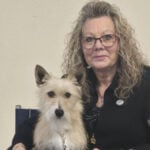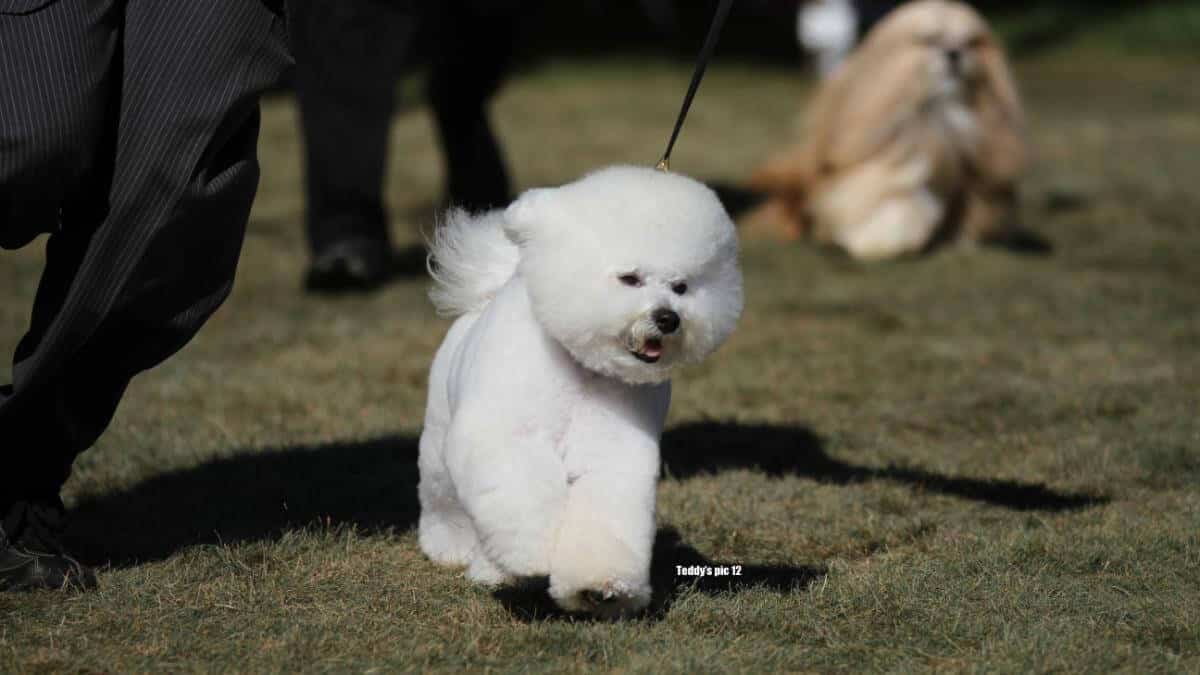
Home » Judging the Bichon Frise

This article was originally published in Showsight Magazine, May 2013 issue.
The first Bichons Frises (correct plural spelling) I ever saw were at a specialty match held in 1969 just outside of Los Angeles, California. Tis was well before the breed had even entered the AKC Miscellaneous Classes. All I knew about the breed at the time was that they were small, white, and curly and basically descended from a little white street dog in France and Belgium. Surprisingly there were far more entered at the match than I had imagined even existed in the United States at the time. And they came in every size and shape imaginable – long ones, short ones, tall ones, big ones, small ones. There were also more people involved in the breed than I would have guessed. Some had a good eye for balance and proportion and a good many others had a lot of dogs. It should be understood that many here in the US who were attracted to the Bichon had written to Europe and asked for show quality stock.
They relied fully upon the integrity of the seller to deliver the best. The similarities in what arrived were in the fact they were white and usually curly. That was about where it all began and ended. Of course every buyer that opened their surprise package was fully convinced that theirs was the real thing and other looking dogs were obviously second rate. Walking along the exercise pens at that first show I attended I spotted a bitch that made me stop in my tracks. Among the many versions of the breed present this one stood out like a princess among drudges. I was quoted at the time of having said, “If they all could look like that one, the breed could set the rings on fire!” The little bitch was to become Ch. Reenroy’s Ami du Kilkanny. Her head and expression as well as overall type was to set the style for the entire breed and the breed was highly fortunate that Ami’s son. Ch. Chaminade Mr. Beau Monde had the ability to pass on that look to his offspring. I was fortunate to have owned Ami’s son who became the breed’s first great sire and influenced the breed throughout the world. Those of us who had become involved in the breed and had some breeding experience realized that the first order of business was a definitive standard.
Our research resulted in finding the original French/Belgium standard of the breed that was written in 1934. It was very well written and it set down an unusually accurate set of proportions for the breed. Today’s AKC standard is based entirely on the original French standard in all respects except that the AKC standard we wrote allowed for trimming which the European standard did not. Te proportions, which the original standard defined, are illustrated here. What unfortunately have never been addressed in either of the standards are two very import issues if one is to fully understand the breed. The Bichon’s body length is only slightly longer than the breed is tall. That being the case, the breed’s back (from well laid back shoulder to set on of tail) must then be shorter than the dog is tall. This is an indisputable fact. In addition the Bichon has a well-arched long neck. Tis gives the breed a look that can be said very much akin to that of an elegant little show pony. Te accompanying illustration (see Figure 2) well illustrates both the essence of what is wanted in the Bichon (the pony in the background) and what is not only highly undesirable but also reverts back to the drag of the breed—a dumpy long and low look that is completely void of elegance.
The greatest disservice the judge can do is to consider the short-legged or long-bodied Bichon for any award of consequence. Any good breeder will tell you the hardest thing to hold fast in a Bichon breeding program is the breed’s correct shape. That is what I look for first in judging the breed. The picture of the young bitch (see Figure 3) beautifully illustrates what the ideal silhouette of the breed of the breed is. Note the elegant line that begins at the top of head and curves beautifully down to the actual highest point of the withers. (If that line extends on down to the middle of the back it’s a dead giveaway for an attempt to optically shorten the overlong back.) The elegant line on the well-made Bichon then continues on in a straight line to the set on of tail and then to the hindquarter whose angulation matches that of the shoulder. It’s all an elegant sweep of lines and curves that follow the natural outline of the correctly made body. It is important to note that with a well-made pair of scissors and handling savvy it is possible to set up almost any Bichon to appear as though it has those highly desired curves and the angulated quarters.
The Bichon must be able to keep that silhouette as he moves around the ring (see Figure 4). The dog that sets up well on the table but moves looking long and low is either too short on leg or too long in body length. The properly made Bichon has reach in front and rear quarter drive and follow through. The rear pastern, from hock to foot, must be able to flex beyond a vertical line behind in order follow through and match the extension of the reaching front quarter. Naturally we want to look into the Bichon’s face and see that dark eye and inquisitive expression. The eyes are set to look directly forward and surrounded by black or very dark brown skin referred to as “halos.” Nicely shaped dark eyes and a big black nose are like three lumps of coal on the snowman’s face. Long or down faced muzzles entirely destroy the pert and sassy expression that is so much a part of Bichon type. The Breed Standard is a good one and gives you an accurate description of how much you want of pretty much everything the Bichon should have. Look for that unique silhouette and the ability to carry it easily around the ring. And then top it off with a head and expression that says, ‘I am a Bichon!’